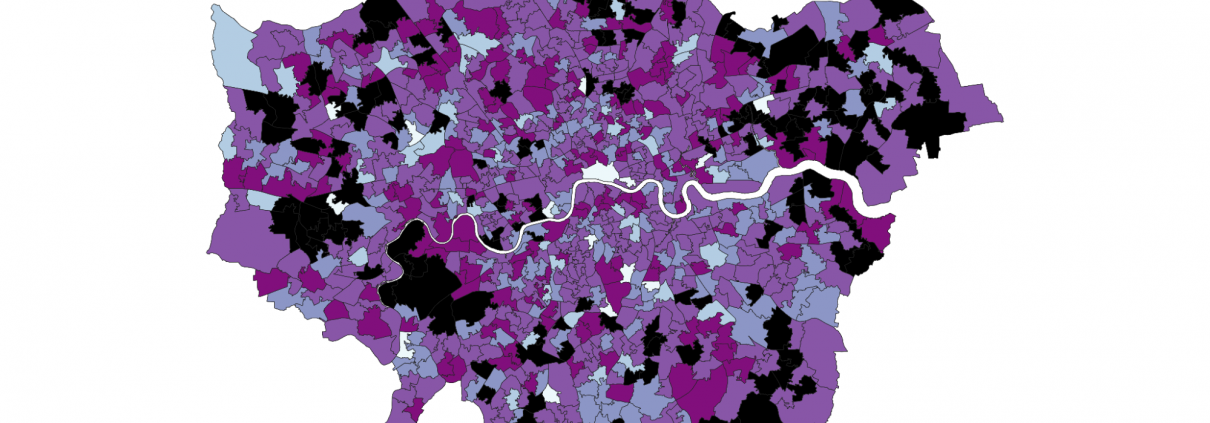Examining the Relationship Between Loneliness and Deprivation in London
Through a comprehensive survey of loneliness, social isolation, and food and fuel security measures, this work uncovers a significant relationship between characteristics such as deprivation, age, household composition and well-being on an individual’s propensity towards loneliness and social isolation.
Loneliness and social isolation are issues that can be both a cause and symptom of broader underlying mental health concerns, in addition to having a deleterious impact on one’s physical health, education outcomes, employability and mental health. For a multitude of reasons, these phenomena are challenging to evaluate and understand in tandem; this can be attributed to the latent nature of loneliness and the wider sensitivity and stigma around mental health. This project explores the prevalence of loneliness and social isolation across London, UK and examines the co-occurrence of these phenomena in the context of economic deprivation indicators such as food and energy poverty. Through a comprehensive survey of loneliness, social isolation, and food and fuel security measures (n=2886), this work uncovers a significant relationship between characteristics such as deprivation, age, household composition and well-being on an individual’s propensity towards loneliness and social isolation.
The exploration of survey data revolves around the comparison of dependent variables (isolation and companionship) against deprivation indicators to provide an overview of the relationship between deprivation indicators and isolation and companionship. Using a Fixed Parameters Ordered Probit (FPOP) framework, forward step-wise regression was applied to understand the variables that contribute most significantly to loneliness and social isolation. Two models were applied, one to establish factors affecting isolation and a second to understand factors impacting companionship.
Through data visualisation and statistical inference, this work shows the connection between economic deprivation indicators and loneliness and social isolation measures, demographic factors (age), illness and subjective well-being. The variables that were determined to be statistically significant are nuanced and not easily deconstructed solely in the context of loneliness and social isolation. However, this work does identify the factors that may affect loneliness and social isolation but does not account fully for the co-occurrence of such phenomena. Life satisfaction was the most statistically significant variable in both models; this aligns with previous research that showed that a significant contributor to subjective well-being is a feeling of “connectedness with others”. Other features that significantly contribute towards loneliness and social isolation include Social Reliance on Family and Friends, Food Insecurity, Health Problems or Illness and Age.



